Setting boundaries
April 29, 2011
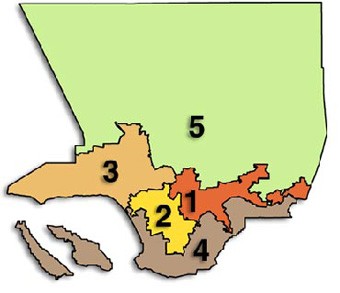 Every ten years, following the federal census, we undertake a process to ensure that Los Angeles County residents are equitably represented in the five districts of the Board of Supervisors. This redistricting process—mandated by federal, state and local law—is now underway.
Every ten years, following the federal census, we undertake a process to ensure that Los Angeles County residents are equitably represented in the five districts of the Board of Supervisors. This redistricting process—mandated by federal, state and local law—is now underway.
Across the county, a series of public meetings are being held with the Boundary Review Committee, whose members are appointed by the board. A website also is up and running with mapping tools so this time you can draw your own lines, with access to a truly remarkable level of demographic information.
We on the Board of Supervisors have until the fall to approve any changes in the existing boundaries, but we expect to take action by the end of August.
So now is the time to participate and be heard. For a lineup of meetings in the Third District and elsewhere, as well as how to contact the review committee directly, please visit the county’s redistricting website. Thanks.
Posted 4/29/11
And…cut!
April 28, 2011
A couple months ago, we brought you the inside story of the county’s nicely crafted—and closely guarded—ceremonial scissors, which have been used to snip scores of red ribbons. Recently, they were used during the dedication of a new senior housing project in West Los Angeles—the Zev Yaroslavsky Apartments—a story we also brought to you. This week, public radio station KPCC followed up, posting this terrific video report on the scissors and the apartments.
Posted 4/28/11
Yom Hashoah: A community remembers
April 28, 2011
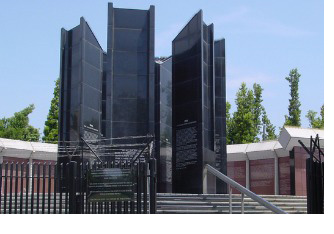 Sunday marks this year’s Community Wide Holocaust Remembrance Day, a solemn annual observance formally known as Yom Hashoah. It commemorates the loss of millions of victims in the Holocaust, Nazi Germany’s World War II extermination campaign directed against Jews, Gypsies, homosexuals, the mentally ill and others the Nazis considered inferior and subhuman.
Sunday marks this year’s Community Wide Holocaust Remembrance Day, a solemn annual observance formally known as Yom Hashoah. It commemorates the loss of millions of victims in the Holocaust, Nazi Germany’s World War II extermination campaign directed against Jews, Gypsies, homosexuals, the mentally ill and others the Nazis considered inferior and subhuman.
Sponsored by the Los Angeles Museum of the Holocaust, this year’s observance takes place on Sunday, May 1, at 2:45 p.m. at the Los Angeles Holocaust Monument in Pan Pacific Park, located at 100 S. Grove Ave. at the north end of the park near Beverly Boulevard. The theme is “In Their Own Words: Diaries From The Holocaust,” featuring a keynote address by John Loftus, a former U.S. government prosecutor, Army intelligence officer, Nazi hunter and author. Call (310) 821-9919 or (310) 280-5010 for additional information.
Posted 4/28/11
Redistricting in your PJs
April 28, 2011
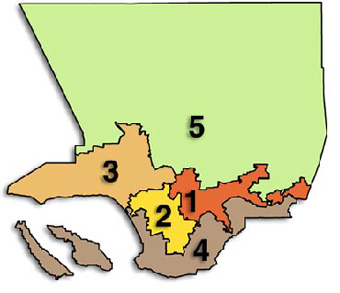 Welcome to Redistricting, 2011—the home edition.
Welcome to Redistricting, 2011—the home edition.
This year, for the first time, Los Angeles County is giving the public the technological tools to create its own boundaries for the five supervisorial districts, using an impressive array of demographic and voting data to ensure each is drawn equitably.
“I’ve never seen this amount of information pulled together about the county on any website,” said Assistant Chief Executive Officer Martin Zimmerman, who is overseeing support staff for the redistricting effort.
The new do-it-yourself mapping feature is just one facet of a legally mandated undertaking that occurs every 10 years, following the federal census. The districts must be drawn to ensure fair representation on the Board of Supervisors, complying with the U.S. Constitution, federal Voting Rights Act, County Charter and California Elections Code. Each district must have an equal number of residents—roughly 2 million.
The board is expected to approve by August any changes to the existing boundaries, based on recommendations from the Boundary Review Committee, or BRC, whose members are appointed by the supervisors. A series of public meetings are now being held throughout the county. In the Third District, one will be held on Monday, May 2, at Van Nuys High School, and another will be convened on Monday, May 9, at West Hollywood Park Auditorium. Both will take place from 6 p.m. to 8 p.m. The BRC encourages public comment at these meetings and via e-mail through the county’s new redistricting website.
In preparing its recommendations for the Board of Supervisors, the committee also will study plans submitted by the public—a job that could be more challenging this time around.
Ten years ago, technology was far less sophisticated and accessible. Facebook billionaire Mark Zuckerberg was still in high school, for example, and dial-up Internet access remained popular in homes across America. Back then, the county installed mapping programs on computers it made available to the public at the Hall of Administration in downtown Los Angeles and at the county’s Public Works Department in Alhambra. Participation was not brisk.
But this time around, with the advent of high-speed connections and cutting-edge database technology, the county entered into a contract with a “geographic information systems” company called Esri to supply the software for home-drawn versions.
Given the depth and variety of information (there’s more than 20 racial breakdowns alone), county officials recommend that anyone interested in submitting their own redistricting plans should first participate in an online training session.
Even if you don’t want to submit a plan, the databases provide an unprecedented one-stop view of the county’s diverse cities and communities down to the census tract level, including not only race but also income, homeownership status, languages spoken at home, voting histories on past issues, party affiliation and gender, to name a few.
Said Assistant CEO Zimmerman: “It’s a treasure trove.”
Posted 4/28/11
Practicing for peril in paradise
April 28, 2011
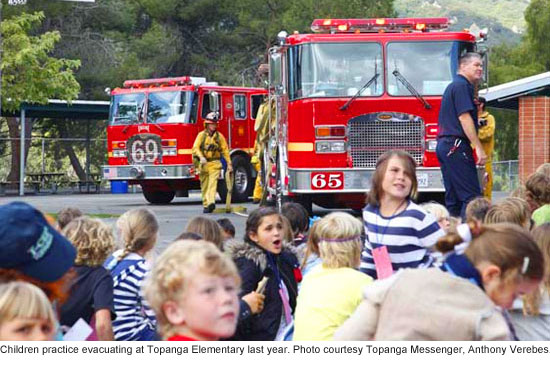 Topanga Canyon is one of the most storied and bucolic nooks in Los Angeles County. It is also one of the most fire-prone.
Topanga Canyon is one of the most storied and bucolic nooks in Los Angeles County. It is also one of the most fire-prone.
The only way in or out is via a winding and often-gridlocked blacktop. Gardens and yards intertwine with flammable chaparral and tinder-dry wildlands. Past fires have shown over the years that the canyon could burn end to end in less than half the time it would take for its 12,000 inhabitants to get to safety.
“There’s a reason we call Topanga the ‘Perilous Paradise’,” says Maria Grycan, community services liaison for the Los Angeles County Fire Department.
“It’s one of the most beautiful places to live and play, but with that beauty comes a great deal of danger in terms of wildfires.”
This is why Topanga has adopted one of the more aggressive strategies in Los Angeles County when it comes to drilling for fire safety: On May 7, for the second year in a row, residents will practice evacuating the entire town.
Sometime in the morning, Topangans will be roused by the sort of “emergency” phone call they could expect in the event of a fast-moving brushfire. If they’ve done their homework, they’ll know what to do next; if not, they’ll have plenty of firefighters around to help them.
Either way, within a few minutes, if all goes as planned, thousands of canyon dwellers will show up and sign in at an assortment of designated addresses where they could survive a wildfire if the canyon’s escape routes were blocked or congested.
Think of it as a massive dry run for an ongoing threat, but don’t call it a fire drill, says Grycan.
“Drills are just to get people out of a burning building,” she says. “This is way beyond that. We’re dealing with a whole canyon here.”
The exercise, which drew nearly 1,100 participants last year, is considered a crucial link in Topanga’s emergency planning. With the serpentine Topanga Canyon Boulevard as the only main road in or out, Topanga is vulnerable to bumper-to-bumper traffic even on better days. Authorities have estimated that evacuating the whole community could take close to six hours—enough time for the town to burn more than twice over, says Grycan. “A fire that started on the north end of Topanga could get all the way through town and to the coast in less than two and a half hours.”
Also, despite its rural reputation, some parts of Topanga are densely populated.
“We live in the Fernwood area, which has so many trees and so many houses that if a fire came to Fernwood, it would be like Armageddon,” says Debra Silbar, who took part in last year’s drill with her then-14- and 9-year-old children in tow.
So at the county’s behest, the unincorporated community has sought in recent years to become a model for preparedness, splitting itself into nine “tactical zones” for easier evacuation, publishing a “Topanga Disaster Survival Guide”, designating safe – or at least survivable – meeting points throughout town for times when evacuation won’t work and educating residents with an annual Topanga Safety Week and evacuation exercise.
This year’s Safety Week will begin May 2 with a series of daily activities to promote awareness. Grycan says a workbook will be mailed to every household to help locals freshen their knowledge. Topanga Elementary School will drill on Wednesday, and county firefighters will demonstrate firefighting techniques.
The week will culminate with the community-wide evacuation exercise from 9 a.m. to 11 a.m. on Saturday, May 7. Led by the county fire department, the drill will involve an array of local law enforcement, first responders and government and community volunteer organizations, says Grycan. “The premise is, there’s a fire, the road is in gridlock, evacuation is not an option. Where do you go?”
The exercise, she says, will help residents remember the answers to that question.
“Our first preference in the event of a fire is that people leave early enough that they can get out of the canyon,” says Grycan. “Plan B is, if you can’t get out, then get to a safety area. And Plan C is, if you can’t do Plan B, then at least get to a neighborhood survival area where, say, a fire is more likely to blow over you, or where, if you were caught in a fire, you’d be more likely to survive.”
Additionally, she says, the drill will allow local emergency workers to practice their internal coordination, and will offer a chance to test Alert LA, the mass notification system that they were unable to use last year. Grycan says a last-minute glitch forced emergency workers to use a fallback notification system that only allowed notification of residents with landlines. As a result, many Topangans failed to get the reminder, particularly in less densely populated areas of the canyon.
“We were one of the evacuation sites but nobody showed up at our place,” says Patricia Moore, whose 6-acre Eden Ranch has been designated a neighborhood survival area because of its flat terrain and ample access to water. “There were two people here to take names, and they just kind of sat there, which was kind of sad.”
Pat MacNeil, former chair of the volunteer Topanga Coalition for Emergency Preparedness, says she expects turnout to be even better this year.
“With all the disasters in Chile and Japan and Louisiana, people are becoming more aware of the fact that they have to take care of themselves,” she says.
Meanwhile, locals like Silbar say they are looking forward to reprising their civic duty.
“Last year, I put my kids in the car, we drove down and checked in and it literally took one minute,” she says. “It was a simple way to help out the community. But we’ve also had to evacuate before, and we know how crazy things can get in those situations. Drills like this, I think, help our kids realize what happens when there’s an emergency in the canyon, and will give them a better sense of control.”
Posted 4/28/11
Conjuring up bygone Jewish magicians
April 28, 2011
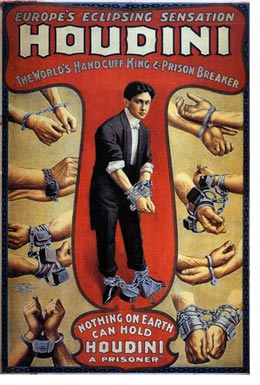 The Skirball Cultural Center is drawing back the curtain on a mysterious and little known chapter in Jewish history: the professional magicians, many of them poor European immigrants seeking a better life as popular entertainers, who enlivened the circus, vaudeville and legitimate theatre circuit around the turn of the last century.
The Skirball Cultural Center is drawing back the curtain on a mysterious and little known chapter in Jewish history: the professional magicians, many of them poor European immigrants seeking a better life as popular entertainers, who enlivened the circus, vaudeville and legitimate theatre circuit around the turn of the last century.
Sometimes adopting fanciful stage names—Harry Houdini, the celebrated escape artist featured in his own companion exhibit, was a Hungarian émigré born Erik Weisz—these performers often yearned to escape their impoverished upbringings and ethnic identities as completely as they would a sealed trunk or padlocked water tank.
The exhibits feature more than 150 evocative artifacts of the era such as playbills, costumes, props and conjuring equipment, along with audio and video clips showcasing the careers of luminaries like Houdini, Albert “The Great Rameses” Marchinski and many others.
Jewish Magicians of the Golden Age and Houdini: Art and Magic can be seen now through September 4. The Skirball Museum is located at 2701 Sepulveda Boulevard, just off the San Diego Freeway below Mulholland Drive. Plan your visit here, and call (310) 440-4500 for additional information.
Posted 4/28/11
Getting in on a royal anniversary
April 28, 2011
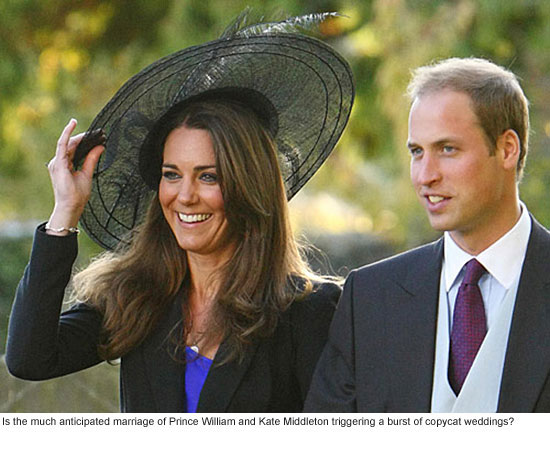 Not everyone in Los Angeles County will be tuned in to Friday’s Royal Wedding, compelling though the nuptials of Prince William and his bride, Kate Middleton, may be.
Not everyone in Los Angeles County will be tuned in to Friday’s Royal Wedding, compelling though the nuptials of Prince William and his bride, Kate Middleton, may be.
At least 133 local couples will probably be too busy on April 29 to check out what’s happening in Great Britain—because they’ll be having their own weddings that day.
“We had no idea when we scheduled that we’d be getting married on the day of the royal wedding, but we’re happy to be having a dignified day,” laughed Shammeer Dawson, a 26-year-old USC graduate student from Gardena who will be marrying her 27-year-old fiancé, Trayshard Sorrell, at a Los Angeles County complex in Norwalk this week.
According to Portia Sanders, division manager at the Registrar-Recorder/County Clerk’s office there, the number of ceremonies scheduled for that date at county offices has shot up this year. Only 49 ceremonies were performed last April 29, she said, and only 104 were performed the next day, which, as in this year, was the last Friday in April.
Wedding fever?
Probably not, Sanders says.
“We’ve seen an increase in marriages over last year in general,” she says. “Some of it is service men and women being deployed. Some of it is the economy, people who were living together getting married now for the benefits. Some of it is just because it’s a Friday and it’s easier for people to fit into their schedules.
“What can I say?” she says, laughing. “There’s always love there, but not always romance.”
In fact, Dawson says, the couple’s first choice had been April 30, the anniversary of their first official date as a couple—dinner at P.F. Chang’s after a concert to benefit victims of the Haitian earthquake—but it fell on a Saturday. “So we chose the closest date.”
Acquainted since 2007, when they met as coworkers at an Enterprise Rent-A-Car office, they remained friends while Dawson went back to school to earn a master’s degree in social work and Sorrell worked his way up through the ranks in the car rental business.
They initially had planned to marry at Sorrell’s church in Hermosa Beach. “But we couldn’t connect with the pastor, and had difficulty booking a date, and it was very stressful,” says Dawson, who suffers from systemic lupus and was worried about her health. Plus, they wanted to marry before her graduation next month, and money was tight—in that respect, she joked, “we’re not the royal family.”
“After prolonging our date, we finally just decided to do it at the county,” she says. “I’ll be wearing a Grecian style gown, kind of a cream-white with jewels on it, and I’ll have my hair up.” Her mother and Sorrell’s cousin will witness, and the couple will leave immediately after the ceremony for a honeymoon in Las Vegas.
“It may not be Westminster Abbey, but I feel like royalty every day with my fiancé,” she says, laughing. “It’s wonderful to be in love.”
Posted 4/28/11
The flipside of fun in West Hollywood
April 28, 2011
West Hollywood’s nightlife is legendary, drawing local and international crowds to hotspots ranging from The Abbey to The Roxy, with every conceivable kind of watering hole in-between.
But where there’s revelry, there may be a hangover, too. A recently-released public health report on problems associated with alcoholic beverage outlets in Los Angeles County found that West Hollywood has the highest concentration of on-premises drinking establishments anywhere in the county. It also ranked near the top in “off-premises” stores selling alcoholic beverages to go.
What’s more, the small, sophisticated city ranks third-worst among the 117 communities surveyed for motor vehicle crashes and 13th worst for violent crime. Its alcohol-related death rate also was deemed a serious enough problem to be ranked “high” among the communities included in the report.
“West Hollywood is, for better or worse, the adult playground of Southern California,” said Mayor John Duran. “It is primarily an adult community,” drawing residents and visitors alike because of its many dining, drinking and entertainment options. “It’s why we all choose to live here.” But, he noted, “there is a tradeoff.”
The popularity of the city’s restaurants, bars and hotels gives West Hollywood the budget to fund important services—even in tough economic times. “Without all that nightlife activity, we wouldn’t have a surplus,” Duran said.
The report, issued by the Los Angeles County Department of Public Health, seeks to draw connections between the density of liquor establishments and an array of problems ranging from car crashes and hospital admissions to neighborhood disturbances and assaults.
Nowhere are the issues and dilemmas more striking than in West Hollywood.
“While we are home to the Sunset Strip’s nightclubs, we are also a Mecca for recovery,” Daphne Dennis, the city’s social services manager, said in an email describing the city’s support for 12-step recovery efforts. Overall, she said, West Hollywood commits “substantial resources” to two strategies recommended in the report—access to mental health and substance abuse services and educational services. Other recommendations— on limiting advertising and on training for alcoholic beverage-selling staffs—are expected to be discussed by the city’s Human Services Commission in May.
The report used 2007 population estimates and information from the state’s Department of Alcoholic Beverage Control to determine the density of liquor outlets in individual communities. Then it analyzed law enforcement and health data to try to measure the impact of such establishments in each part of the county.
It found an average of 16 alcohol outlets per 10,000 people countywide. In West Hollywood, the concentration was far greater—47.3 on-premises outlets per 10,000 residents.
Still, the per-capita measurements of alcohol-related problems may not tell the whole story when it comes to West Hollywood—a 1.9 square mile city with 34,399 residents which has a much larger footprint after dark.
“Our city swells to over 100,000 on the weekend. Even on a weeknight, our population probably doubles,” said Lt. David Smith, of the Los Angeles County Sheriff’s Department’s West Hollywood station.
He said the department responds to the influx by taking a pro-active approach to all kinds of alcohol-related issues, including DUI enforcement.
Every holiday season, deputies and city staffers hand out cocktail napkins bearing an anti-drunk driving message to bars and nightclubs. And for the past several years, a wrecked car has been displayed prominently at the corner of Santa Monica and San Vicente boulevards from early December through New Year’s—a reminder of the consequences of having one for the road.
“We take drunk driving seriously,” Smith said, “and efforts are underway to counteract it.”
At Barney’s Beanery, a West Hollywood institution that’s celebrating its 90th anniversary Saturday, regional manager AJ Sacher said it makes good business sense to keep its clientele from drinking and driving.
“We call cabs all the time for our customers,” Sacher said. Barney’s, like other drinking establishments, also offers free non-alcoholic beverages for designated drivers and lets people who’ve overindulged leave their car valet-parked all night, without charge. “We want them to come back.”
Sacher said West Hollywood businesses tend to “operate in an extremely responsible manner” toward the drinking public—“It’s our livelihood.”
And he said he thinks the public as a whole has gotten savvier about drinking and driving in recent years.
“The vast majority of people who go out to restaurants in Los Angeles County every night are very responsible with their alcoholic beverage consumption, get home safely and don’t cause any problems.”
But when there are alcohol-related problems, the public health report found, they tend to happen where liquor-selling facilities are clustered.
And West Hollywood is not alone in feeling the effects.
On the Westside, Culver City, Santa Monica and Malibu also have high numbers of alcoholic beverage establishments per capita and have had their share of related problems, particularly motor vehicle crashes. (Beverly Hills, on the other hand, has one of the county’s highest concentrations of restaurants, bars and stores selling liquor, but has experienced only low levels of the social problems surveyed in the report.)
Elsewhere in the county, Commerce had the county’s highest concentration of stores selling liquor. It also had the worst rate of car crashes, the 2nd worst rate of alcohol-related deaths, and one of the worst violent crime rates. San Fernando, with a high proportion of liquor stores, had the worst rate of alcohol-related deaths. The correlation between liquor establishments and social problems wasn’t always quite so pronounced, though. For example, Westmont, an unincorporated area close to South Central Los Angeles, had the worst violent crime rate among the communities surveyed—but ranked only “medium” in the number of liquor stores.
“Obviously, there are always going to be exceptions,” said Ben Lee, chief of the research and epidemiology unit that crunched the data for the report. But overall, he said, the report should serve as an eye-opener for people and communities across the county, as well as a tool for policy-makers seeking to combat an array of ills associated with alcohol abuse.
Posted 4/28/11
Do you feel Lucky?
April 28, 2011
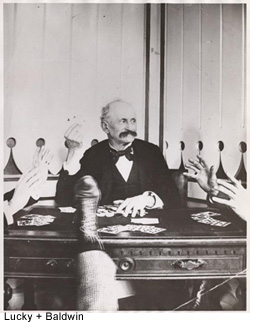 This weekend let your spurs jangle as the Los Angeles County Arboretum and Botanical Gardens presents “Wild West Days,” a festival honoring Victorian-era American Western culture.
This weekend let your spurs jangle as the Los Angeles County Arboretum and Botanical Gardens presents “Wild West Days,” a festival honoring Victorian-era American Western culture.
The arboretum grounds are the home of “Lucky” Baldwin’s Ranch, named after Elias Jackson Baldwin, the famous adventurer, philanderer, prospector, investor and racehorse owner who built it. He bought the land the Arboretum is on—and 63,000 acres more—in 1875, intending to build a desert resort by creating the Santa Anita Racetrack, the Oakwood Hotel and forming of the town of Arcadia (one of the few local towns that allowed alcohol at that time).
Today, part of the original plot remains as a county-owned 127-acre botanical garden and historical preserve, pairing rare plant collections from around the world with rich historical artifacts and buildings from various periods of California history. It is also the home of about 200 or so peafowl, descendants of birds Lucky brought from India in 1880.
Wild West Days’ attractions include trick roping displays, singing cowboys, carriage rides, calliopes and barn dances. The historic Queen Anne Cottage, Coach Barn and Santa Anita Train Depot will be open for touring. There will be games and crafts for children, authentic western BBQ and a Root Beer Saloon. A full schedule of events is available on the website.
The festival takes place Saturday, April 30, and Sunday, May 1, from 10 a.m. to 4 p.m. each day. Entry is free with the price of admission to the Arboretum, which is located at 301 North Baldwin Avenue in Arcadia.
Posted 4/28/11




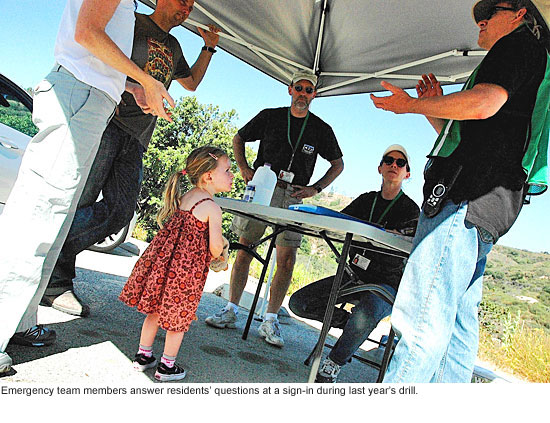
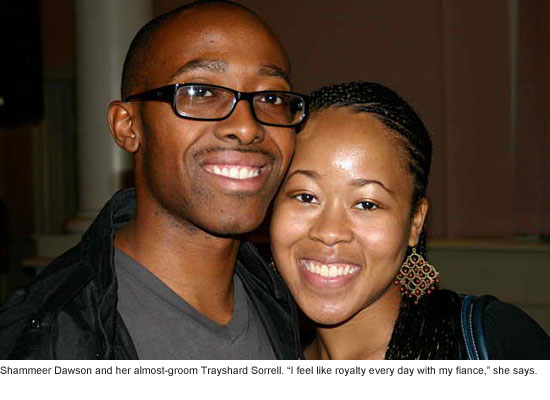
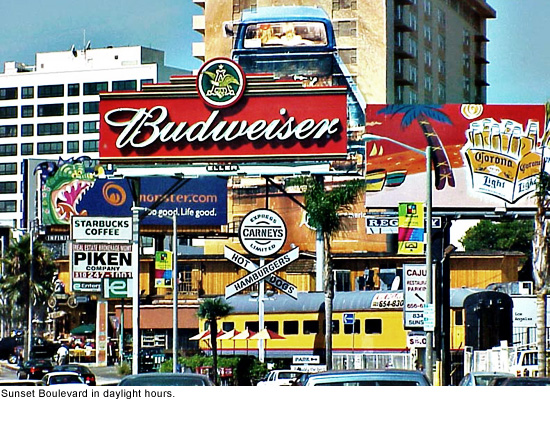





 Check for the latest closure information
Check for the latest closure information








